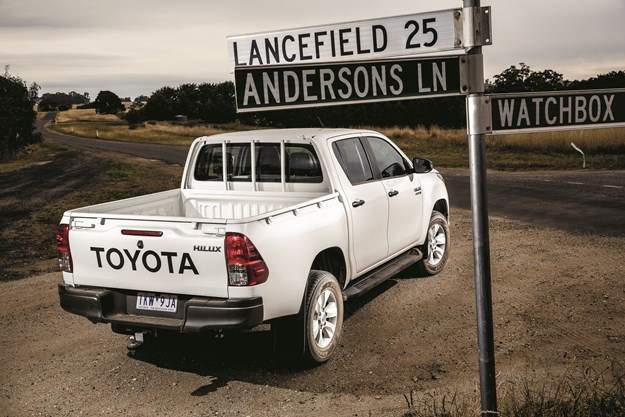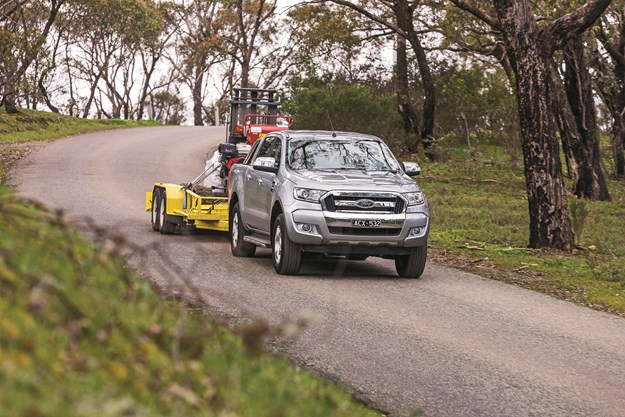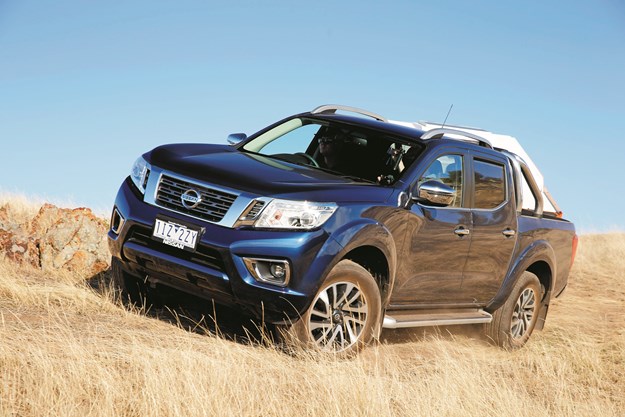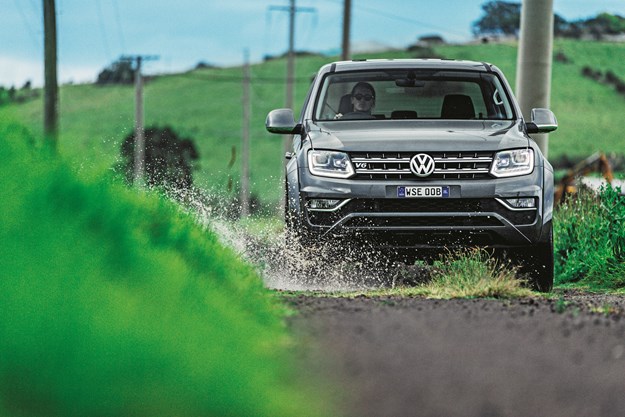Wish to avoid the deprecation hit when you drive a new ute out the showroom door but am uncertain about buying second-hand?
Buying a second-hand ute and making sure you get a good one is not rocket science but does require patience, perseverance and, above all, a plan!
You might be thinking of either buying privately or buying through a dealer, as both have advantages and disadvantages, but it’s best to explore both. The wider the net you throw, the better chance of catching the best fish. The main car-selling websites, which are the best place to starting looking for a second-hand ute, tend to combine private-sale and dealer second-hand cars anyway – unless you select another level of sorting – so that wider net is automatically thrown for you.
Dealer cars come with certainly of title and ownership, and generally with some warranty but will cost more and may not be necessarily be a good car, depending of course on the diligence of the dealer. Private-sale cars are cheaper, but come with no warranty and you’ll need to thoroughly check that the person selling the car actually owns the car.
On the subject of throwing a wide net, those same websites allow you to select a ‘distance from you’ as one of the search criteria. No point in even considering utes that are too far away to inspect with reasonable convenience unless to get a better idea of average prices for the type of ute you’re looking for. If you live close to a state border, the ‘by state’ searches are also irrelevant and another reason to use ‘distance from me’.
Once you have selected your preferred price range, the next key search criteria you need to use is ‘lowest mileage’, which is generally far more important than a ute’s age in years given all utes have a finite mechanical life – hopefully at least 400,000km – and the more of it that is used up when you by it, the less that is left. The only qualifier on this is you may have a low-mileage older ute that’s been out in the weather all its life and its poor exterior condition overrides its mechanical youthfulness.
As ever, a documented service history is close to being essential (dealer car or not), while a documented ownership history is also important although not as vital as the service history. A professional road-worthiness inspection by a mechanic is also very worthwhile if you are not mechanically-minded. Even having a friend along when inspecting a potential purchase is a good idea if, for no other reason, they may notice something you don’t.
All the currently popular utes are all either end-of-generation or mid-generation and this is how they look on the second-hand market (list is by new sales popularity).
TOYOTA HILUX
The Toyota Hilux is the most sought-after of second-hand utes and the high demand keeps prices high. The current generation Hilux arrived here late in 2015 with four different engines and the usual cabin and drivetrain options. Since that time the petrol V6 engine has been dropped. The Hilux is a ute that does everything very well, although the mainstream engine – the 2.8 diesel – is a little underwhelming in performance and is over-geared with the automatic and works better as manual. The Hilux is also physically smaller than big utes like the Ranger and the payload and towing capacities are not as high in some cases.
FORD RANGER
The current generation Ranger arrived here in late 2011 but was revised heavily for the 2016 model year, which brought a noticeably better all-round ute. An optional powertrain, two-litre bi-turbo diesel and 10-speed automatic came in 2018. Such is the Ranger’s popularity it now outsells the Hilux in the key 4WD market, which keeps second-hand prices strong.
The Ranger is a big, robust ute and with the gutsy 3.2-litre five-cylinder diesel is about as good as it gets for heavy-duty low and tow work. The small bi-turbo engine has the same towing capacity on paper but doesn’t match the bigger engine when there’s serious work to be done, although it’s quiet and refined and peppy enough with moderate loads.
MITSUBISHI TRITON
The current generation Triton arrived here in 2015 and is distinguished from the other popular utes by being a bit smaller and not as good for carrying or towing heavy loads but it’s also handier in confined places and the least expensive of the mainstream utes. This is why its new sales only rank behind Hilux and Ranger. The low new price also translates to low second-hand prices while the strong new sales means good supply on the used market. The Triton is also strong with add-on safety equipment while more expensive models have the inherent safety advantage of full-time 4WD.
HOLDEN COLORADO
The announcement that US carmaker General Motors is closing the Holden brand in Australia can only force down the value of second-hand Colorado utes. Holden has guaranteed parts and service until 2025 but beyond that it will mean sourcing parts through independent channels. And unfortunately, while there is some common parts between the Isuzu D-Max and the Colorado, most of the service-sensitive items such as the engines and gearboxes are different.
Outside of that, the Colorado offers a biggish cabin and a hard-working engine that gets the job done. Excellent automatic gearbox too. It could well be the value buy in the used-ute market. The current generation Colorado came out in mid 2012 but a top-to-bottom redesign in 2016 made it a far better ute.
ISUZU D-MAX
The Isuzu D-Max has been the quiet achiever of the ute market, rising from near obscurity upon release in 2012 (at the same time as the Colorado) to a significant force in the market today. Not much changed in the first five years of this generation’s life but 2017 bought a revised engine, new gearboxes and stronger all-round performance. The engine needed upgrading for Euro 6 emissions standards, which meant, among other things, the fitting of a diesel particulate filter.
The D-Max is still a modest performer but happily gets the job done while its reputation for reliability and low service costs means it’s a popular second-hand buy. An all-new D-Max in 2020 should bolster the used D-Max stocks.
NISSAN NAVARA
The current Nissan Navara was another 2015 release and is distinguished by the fact that most dual-cab variants have coil springs at the rear. You can get more traditional leaf springs at the rear but not with the top-spec engine.
It’s fair to say that this generation Navara has been a disappointment for Nissan, sales-wise, and not too good either at towing or carrying heavy loads, although this was improved for the 2017 model and again the 2018 model. If you want a more general-duties ute and not a heavy-duty workhorse it’s good value second hand.
MAZDA BT-50
When this generation Mazda BT-50 arrived in late 2011it was a rebadged twin of the then-new Ford Ranger. There were a couple of minor technical changes – steering-rack ratio and suspension damper calibration – but otherwise the two were mechanically identical. From 2016 however, with Mazda not adopting the mechanical enhancements made to the Ranger in that year, the two are notably different.
Despite the similarities the BT-50 has only enjoyed a faction of the Ranger’s sales, so is not as common on the used market. But if you can find one it offers the same basic attributes of the Ranger, namely a big cabin and excellent load and tow performance thanks largely to the big and ‘grunty’ 3.2-litre five-cylinder diesel. A new BT-50 should follow the new Isuzu D-Max this year, which could help second-hand availability of the current model by year’s end.
VOLKSWAGON AMAROK
Volkswagen’s Amarok first appeared in Australia in early 2011, initially with a four-cylinder bi-turbo diesel. This was joined by a 3.0-litre V6 diesel in late 2016. The four-cylinder Amarok set the benchmark for utes back when it arrived and the V6 has pushed that superiority out to another level and is in a class of its own in terms of performance, heavy-duty towing power, handling, the safety of full-time 4WD, fitting a full-size pallet between the wheelarches and ease of driving. Better still, the V6 is available right from the farm- and work-friendly Core model to the flash-as-high-street Ultimate, so there is a V6 for everyone. Lack of VW dealerships in regional and rural areas and not being the favourite of independent country mechanics are the main drawbacks.








.jpg)
